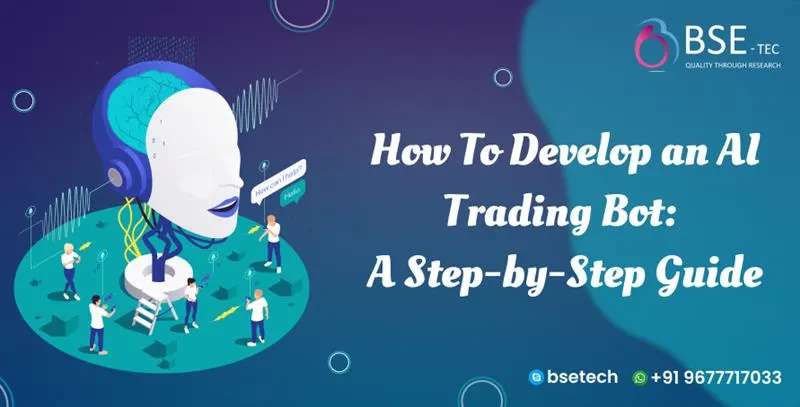
In recent years, the world of trading has seen a revolutionary shift with the rise of Artificial Intelligence (AI). AI trading bots are transforming how investors and traders operate, offering speed, precision, and 24/7 market engagement. If you’re curious about developing your own AI trading bot, you’re in the right place. Let’s walk through the process step-by-step.
What is AI?
AI (Artificial Intelligence) refers to the simulation of human intelligence in machines that are programmed to think, learn, and problem-solve. It involves creating systems that can perform tasks typically requiring human intelligence, such as visual perception, speech recognition, decision-making, and language understanding.
What is a Trading Bot?
A Trading Bot is an automated software program that executes trades in financial markets based on preset rules or algorithms. It helps traders buy or sell assets automatically, often operating at speeds and frequencies impossible for humans to match, to maximize profits or minimize losses.
Before diving into coding, it’s crucial to grasp the fundamentals of trading, such as market types, trading strategies, and risk management. Simultaneously, familiarize yourself with AI concepts like machine learning, data analysis, and natural language processing. This knowledge foundation will guide your development process and help tailor your bot for genuine trading success.
Step 1: Define Your Trading Strategy
An effective trading bot relies on a clear strategy. Do you want it to follow trend lines, perform arbitrage, or execute mean reversion? Decide on the parameters and rules that will guide its decisions. Keep in mind that simpler strategies are easier to implement and test initially, while more complex algorithms may offer higher returns but require sophisticated modeling.
Step 2: Gather and Prepare Data
AI models are only as good as the data they learn from. Collect historical data on the markets you’re interested in — such as stock prices, crypto, forex, etc. Use reliable sources like Yahoo Finance, Quandl, or Exchange APIs. Then, clean the data by removing anomalies, handling missing values, and structuring it for analysis.
Step 3: Choose the Right Tools and Technologies
To build your AI trading bot, you’ll need programming skills and the right tools. Python is the most popular language in this space owing to its rich ecosystem — libraries like pandas for data manipulation, scikit-learn for machine learning, and TensorFlow or PyTorch for deep learning. Additionally, select a trading platform or API (like Alpaca, Binance, or Interactive Brokers) to execute trades.
Step 4: Develop and Train Your AI Model
Using your prepared data, train machine learning models to predict market movements or generate trading signals. Start with simple models like linear regression, then experiment with more advanced techniques like Random Forests or neural networks. Test your models thoroughly using backtesting on historical data to evaluate performance.
Step 5: Create the Trading Logic and Risk Management
Integrate your AI predictions into a trading algorithm that makes real-time buy/sell decisions. Remember to incorporate risk management — set stop-loss and take-profit levels, diversify trades, and allocate position sizes carefully. Safety features are essential to minimize potential losses.
Step 6: Backtest Your Bot
Before deploying live, simulate your bot’s performance on unseen historical data. This step helps you identify bugs, refine strategies, and understand potential profitability and risks. Be honest about the results and adjust your model accordingly.
Step 7: Deploy and Monitor
Once confident, connect your bot to a live trading account through an API. Start with small capital and monitor its activity relentlessly. Keep track of performance metrics, and be ready to pause or adjust your bot if it behaves unexpectedly or market conditions change.
Developing an AI trading bot is both challenging and rewarding. It combines skills from finance, programming, and data science, requiring continuous learning and adaptation. Remember, no bot guarantees profits — markets are inherently uncertain. Use your AI trading tool as a supplement to sound judgment and disciplined trading. If you’re serious about building your own AI trading bot, take it step by step, stay curious, and keep learning along with BSEtec – a Blockchain & AI development company. With patience and persistence, you could turn your automated trading ideas into a profitable reality!
Did you find this article useful? Let us know by leaving a comment below, or join us on Twitter and Facebook.


